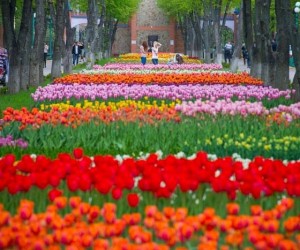Kirovograd (укр. – Кіровоград, рус. – Кировоград), the main city of Kirovograd region, located on the hilly banks of the Inhul.
TOP sights of Kirovograd

Attractions of Kirovograd in historical context
The story of Kirovograds founding with the name of the Serbian Lieutenant General John Horvath-Kurtytsya. In 1750 he was Colonel of the Austrian army, turned to the Russian ambassador in Vienna with a proposal to create a Serbian colony in. The next year two hundred Serb Dnieper was established several military settlements, called New Serbia.
1754 on the banks Inhul started building earthen fortress of St. Elizabeth, located on the southern border of New Serbia, halfway through already existing Archangel and Mishurinorizkym forts. Hexagonal fortress of Saint Elizabeth could fit dvotysyachnyy garrison, and a hundred of the guns would inflict shturmuvalnykam outstanding obstacles.
Even in 1754, under the walls of the fortress under construction settlement was formed, which in 1764 became the center of Elizabethan province, and in 1775 – the city Elizavetgrad. Today, the fortress that gave birth to the city, reminiscent only remains of earthen ramparts, cannon carriages on granite and hospital buildings (former fortress barracks). In 1829 the city became a center of military settlements in the south of the Russian empire and headquarters reserve cavalry corps, which still resembles the complex military and administrative structures (1848).
A wide range of religious buildings of the city indicates the religious preferences of its residents in doateyistychni times. Greek church (1812) is reminiscent of a large colony of Greek immigrants Elizavetgrad and unusually large synagogue (1853) red brick preserves the memory of a large Jewish community. The main urban Orthodox Church – Transfiguration Cathedral (1819) appeared a few years after the destruction of the fortress at Trinity Church, and the Holy Church of the Intercession (1875) at the headquarters of the military camp had served to help people. The central part of this Kirovohrad decorated with dozens of administrative and residential buildings XIX – early XX century. Providing urban development moving provincial celebrations and distinctive charm.
Soviet times were Elizavetgrad inherited beautiful monuments and new (the third attempt) personalized name. 1924 First mention of Queen Elizabeth vytravyly, replacing the old name for Zinoviev. Later (1934) Sergei Kirov uvikovichyly memory, naming the city of Kirov, and when in 1939 created a regional center, the modern name appeared.